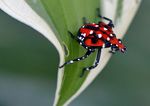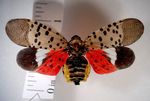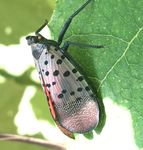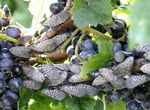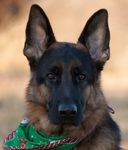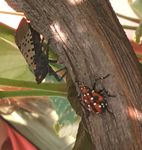Spotted Lanternfly - University of Delaware
←
→
Page content transcription
If your browser does not render page correctly, please read the page content below
Spotted Lanternfly
Quick Take
What: What is Spotted Lanternfly?
The spotted lanternfly, Lycorma delicatula, is a plant hopper native to China,
The spotted lanternfly—a
India, and Vietnam, that belongs to the order Homoptera, family Fulgoridae.
destructive, invasive plant
hopper attacks many hosts The spotted lanternfly adult is 1” long and 1/2” wide at rest. The forewings
including grapes, apples, are gray with black spots, and the hind wings are red with black spots. The
stone fruits, walnut, willow, head and legs are black, and the abdomen is yellow with broad black bands.
and tree of heaven—has Immature stages are small, round, and black with white spots, and develop
been confirmed in New red patches as they grow.
Castle County. Delaware is
the second state to have Officials believe the spotted lanternfly must feed on tree of heaven
found the insect, which was (Ailanthus altissima) to reproduce, however, the insect can be found
first detected in Pennsylvania feeding on other plants and trees as well. Egg masses will be laid on the
in 2014. trunk, branches, and limbs of medium to large trees, often in the upper
reaches of the canopy. In springtime, nymphs will hatch and move off the
Significance: trees and search for new hosts, including several agricultural crops,
including grapes, apples, and peaches.
Agriculture is Delaware’s #1
industry, providing more
than 20,000 jobs and $8
#HitchHikerBug
billion of economic activity, The spotted lanternfly is a very distinct insect at both the nymph and adult
including $1.2 billion in direct phases. The egg masses can be hard to spot making it easy to transport
sales from our 2,500 family them on vehicles and other outdoor items.
farms.
Based on the proximity to Pennsylvania and the ease in which the spotted
This insect is a potential lanternfly is able to “hitch-hike,” officials believe this could be how the insect
threat to several important was introduced to Delaware. Therefore, it is important for Delawareans and
commercial crops including visitors to inspect their vehicles and anything they may be transporting,
grapes, peaches, apples, including trailers, stone, metal, or anything that has spent time outdoors
and timber. Early detection and have an egg mass attached. They have been seen hitching rides in and
is vital for the protection of on cars and clothing. It is important to check for any sign of the spotted
Delaware businesses and lanternfly before leaving to and from surrounding states, especially
agriculture. Pennsylvania, New Jersey, Maryland, and Virginia.What to do...
If you find a spotted lanternfly,
there are several ways you can
Have You Spotted Me?
help us stop the #HitchHikerBug:
1. Take a picture:
With the GPS function turned
on your smartphone or a
camera with GPS, take a
photograph of any life stage
(including egg masses).
Upload your photograph to
Facebook or Instagram, using
the hashtag #HitchHikerBug.
If you don’t have GPS Credit: itchydogimages, Flickr Credit: John, Flickr
capabilities and/or access to
social media, submit the
photograph via email to:
HitchHikerBug@state.de.us
and include your name,
contact information, and the
address or georeference of
where the photo was taken.
2. Collect a specimen:
Suspected specimens of any
Credit: John, Flickr Credit: Pennsylvania Dept. of Ag
life stage can be collected and
placed in a vial or plastic
zip-lock bag with the name
and contact information of
the collector, and turned in
It’s the Law!
to the Delaware Department
The Delaware Department of Agriculture has the authority under the Plant
of Agriculture CAPS program
Pest Law (Title 3, Chapter 11 § 1103) to issue orders for any control
for verification. This insect is
measures it deems necessary to prevent the spread of dangerously
considered a threat to some
injurious plant pests. Upon knowledge of the existence of such plant pest,
crops and early detection is
such as spotted lanternfly, the Department shall notify the person(s), own-
vital for the protection of
er(s) or the tenant(s) in possession of the premises in question of the exis-
Delaware businesses and
tence of this pest and to implement the prescribed control measures
agriculture.
within the prescribed time limit, otherwise the individual will be subject to
civil penalties.
3. Report a site:
If you can’t take a specimen If the person associated with or owners of the plants infested with spotted
or photograph, call lanternfly are found to neglect, fail or refuse to apply the control measures
(302) 698-4586 or send an prescribed by the Department , in the manner or at the times ordered and
email to: directed by the Department, then the Department may cause the prescribed
HitchHikerBug@state.de.us control meaures to be applied at the expense of that person.
with a message detailing the
What I Am Not...
location of the sighting and
your contact information.
de.gov/hitchhikerbug
Stink Bug (nymph) Boxelder Bug Leopard Moth Tiger MothSigns and Symptoms of SLF
Spotted lanternfly feeds on sap from trees using their piercing-sucking
mouthparts, causing noticeable weeping wounds on susceptible trees, leaving a
grayish or black sticky trail along the trunk. This sap will attract other insects to
feed, notably wasps and ants.
An indirect result of feeding is the production of honeydew, an excretion the
spotted lanternfly produces as a result of feeding. This sticky substance is very
much a nuisance to those who have yards, playground equipment, lawn
furniture, and pets. Not only is it annoying for homeowners, the honeydew Examples listed below are some
causes mold growth on plants that prevents photosynthesis and weakens the of the available insecticide
plant. It also attracts stinging insects, looking to feed on the honeydew, products containing the most
effective ingredients studied
Branch dieback, wilting and plant death is a common symptom of heavy spotted (dinotefuran, imidacloprid,
lanternfly feedings. carbaryl, and bifenthrin).
Detrimental to Animals
Be sure to follow label directions.
Mention of a product name does
not constitute a specific
The coloring of the spotted lanternfly is indicative endorsement by the Delaware
of a toxic insect. There have been reports of dogs Department of Agriculture or the
University of Delaware.
becoming ill after ingesting spotted lanternfly, with
symptoms including blistering of foot pads. Pets Contact insecticides (bifentrhin,
should be observed closely to keep them from carbaryl). Apply when adult
eating spotted lanternflies of any life stage. insects are present:
Horse and livestock owners should be on the •BIFEN 7.9F SELECT
lookout for spotted lanternfly in their hay and other •FLEE READY-TO-USE YARD SPRAY
feed sources, especially if feed comes from a •HOME MD MAXIMUM DEFENSE
surrounding state known to have spotted lanternfly. YARD CONCENTRATE
•LESCO CROSSCHECK PLUS
MULTI INSECTICIDE
Contact your veterinarian immediately if you •MAXXTHOR SG
suspect that your animal has ingested this insect or •ORTHO MAX PRO
is showing any signs of illness. •SEVIN
•TALSTAR SELECT INSECTICIDE
•UP-STAR GOLD INSECTICIDE
So You Have Tree of Heaven? Systemic insecticides
If you have found tree of heaven on 3. Time to cut and treat (imidacloprid, dinotefuran). Most
your property, it is time to make a effective when applied in spring
Now that you have your trap trees
and summer before adults build
plan! picked out, it’s time to cut the up:
remaining tree of heaven.
1. Identify which trees are female. •BAYER ADVANCED 12 MONTH
These trees will have the winged Tree of heaven is notorious for TREE & SHRUB INSECT CONTROL
seedpods. Female trees should be growing back with a vengeance if •BONIDE ANNUAL TREE & SHRUB
removed from your property to it’s only cut down. The roots have INSECT CONTROL WITH
eliminate the potential for spotted been known to reach out 26 feet SYSTEMAXX
•COMPARE-N-SAVE SYSTEMIC
lanternfly to reproduce. and will send up offshoots if the
TREE & SHRUB INSECT DRENCH
parent tree is cut down. In order •MONTEREY ONCE A YEAR INSECT
2. Create “trap trees.” to ensure that the tree is killed, CONTROL II
Trap trees are male tree of heaven you will need to treat it with a •ORTHO BUG B GON YEAR-LONG
that do not have flowers. Leave a herbicide. TREE & SHRUB INSECT
few male trees standing. Having CONCENTRATE
control of these trap trees allows •SPECTRACIDE TREE & SHRUB
When using herbicides and INSECT CONTROL
for easier treatment and helps
insecticides, remember to read •TRANSTECT 70 WSP INSECTICIDE
to prevent any spotted lanternfly
the product label and be •VENOM INSECTICIDE
from becoming attracted to more •ZYLAM LIQUID SYSTEMIC
important plants. mindful of all label restrictions!
INSECTICIDETree Identification
Proper identification of tree of heaven is important in helping to eradicate
this invasive pest. Although tree of heaven is an invasive plant, there are Tree of Heaven
several native trees that are similar-looking. It’s important to distinguish (Ailanthus altissima)
these from tree of heaven so that these look-alikes are not removed.
Tree of Heaven is a very hardy tree species that can be found growing
almost anywhere because of its tolerance of poor soils. The species can
grow to 82 feet, and is usually found in clusters.
• Leaves: Compound leaves with compound leaflets. Leaves and twigs
have strong “nutty” odor when crushed or cut.
• Bark: Gray bark with vertical lines. As the tree gets older, bark becomes
darker.
• Fruit: Females have winged seed pods that hang on the tree through
the winter.
Leaves and winged seed pods of
tree of heaven.
Sumac is much smaller when fully grown reaching 32 feet, on average.
There are two common sumacs found in Delaware—Staghorn and Smooth.
• Leaves: Compound leaves with serrated leaflets.
• Bark: Staghorn has a velvety bark much like the antlers of a deer.
Smooth sumac has a brown-gray bark that is smooth and will develop
scaly ridges with age.
• Fruit: Clusters of round, finely-haired reddish fruit in an upright cluster.
Black walnut is a tree that can grow upwards of 60-80 feet, but has low
tolerance for shade and poor soil.
Leaves and seed head cluster of
• Leaves: Compound leaves, but the leaflets have finer serrations than staghorn sumac.
sumac.
• Bark: Brown on the surface, but darker brown when cut. The bark is
ridged and furrowed, with a rough diamond pattern.
• Fruit: Matures in the fall, growing between 2-2.5 inches round with a
hard outer husk over the nut.
For More Information
Delaware Department of Agriculture—CAPS Program Leaves and fruit of a black walnut.
2320 S. DuPont Hwy, Dover, DE 19901
HitchHikerBug@state.de.us
302-698-4586
de.gov/hitchhikerbugYou can also read




